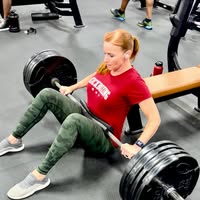Aug 26 (edited) • Article Series
Beef Up or Burn Out? The Wild Science of Myostatin and Mega-Muscles Part 3
When people hear about drugs or gene therapies that block myostatin, it can feel far removed from daily life. But what if there were ways to nudge this brake system with things already in your kitchen or supplement cabinet? While no diet or supplement will “turn off” myostatin the way a lab-designed antibody can, several foods and compounds have been studied for their potential to lower myostatin activity or tilt the balance toward more muscle-friendly signals.Let’s start with diet. Calorie restriction, especially versions like the DASH diet, has been shown in older adults to reduce circulating myostatin levels. The theory is simple: by lowering inflammation and improving metabolic efficiency, the body doesn’t feel the need to clamp down as hard on muscle growth. Protein intake is the most obvious lever people ask about, but here the data is mixed. High-protein diets build muscle, yes, but the direct effect on myostatin expression is inconsistent across studies.Supplements give us more specific leads. Creatine, one of the most researched compounds in sports science, has been shown to blunt myostatin’s activity when combined with resistance training. It not only preserves muscle but also lowers myostatin in serum. Epicatechin, a flavonoid found in dark chocolate and green tea, increases the ratio of follistatin to myostatin. Follistatin is essentially the antagonist to myostatin—the tug-of-war partner that pulls the rope toward growth instead of restraint. In practice, this may support hypertrophy, though human studies are still small.Vitamin D also enters the conversation. In populations with deficiency, supplementation has been shown to reduce myostatin mRNA expression. That means vitamin D may help redirect calories toward supporting muscle instead of being stored as fat, but the effect depends heavily on baseline levels. Quercetin, another plant compound found in apples and onions, has demonstrated in vitro the ability to inhibit myostatin and enhance satellite cell activity, which is important for muscle repair. Finally, Fortetropina supplement derived from fertilized egg yolks has reduced circulating myostatin by about 20 percent in human trials, making it one of the more direct nutritional approaches on record.
The strengths of these strategies are that they’re accessible, relatively safe, and stack well with training. The limitations are that the effects are modest, vary widely between individuals, and are nowhere near as potent as pharmaceutical blockade. Some studies show no measurable change in myostatin, and doses can matter greatly—for example, too much vitamin D introduces toxicity risks rather than benefits.
The best way to think about nutrition and supplements is as gentle adjustments to the brake pedal, not as cutting the brake line. They can make the system more responsive, especially when combined with training, but they won’t rewrite your physiology overnight. Imagine spraying a little WD-40 on a stiff brake: it helps things move more smoothly, but you’re still operating within the system’s design.
For coaches and athletes, the take-home is this: consistent training, adequate recovery, and a well-rounded diet are the real drivers of muscle adaptation. Supplements can tilt the balance, especially if targeted to deficiencies or paired with intelligent programming, but they aren’t substitutes for the basics.
In the next part, we’ll look at gene therapies the high-tech, cutting-edge attempts to reprogram the myostatin pathway permanently and ask the hard questions about what happens when we tinker directly with the genetic code.
4
2 comments

skool.com/castore-built-to-adapt-7414
Where science meets results. Learn peptides, training, recovery & more. No ego, no fluff—just smarter bodies, better minds, built to adapt.
Powered by





